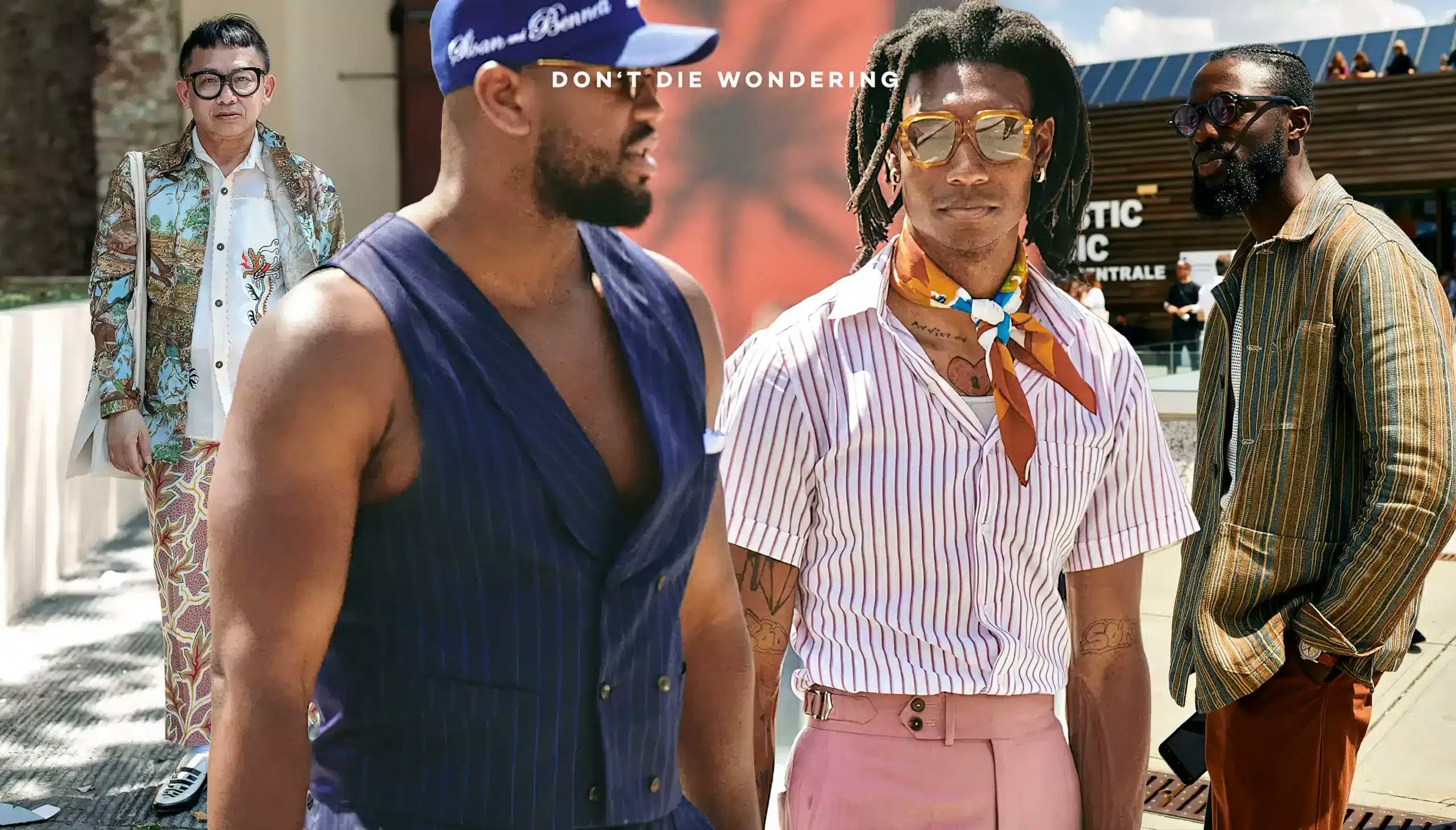Style meets history: From Renaissance to Runways, DDW unveils the Fashion Powerhouse of Florence and the Evolution of Pitti Uomo.
In the world of fashion enthusiasts, there are numerous important dates to note on the calendar, many of which center around fashion week. With events dedicated to men’s and women’s fashion, as well as showcasing autumn/winter and spring/summer collections, and three prominent cities—Milan, Paris, and New York—to keep an eye on, the schedule of any fashion enthusiast is already quite hectic. However, amidst this flurry of activity, Pitti Uomo emerges as a notable addition.

Image courtesy of Pitti Uomo
It all started in Florence, Italy, where Pitti Uomo first took place and granted the city the nickname of menswear mecca. Bringing together stylish men, trendsetters, and industry insiders from around the globe, the event happens twice a year, in January and June, and beckons around 30,000 industry members. Over its more than 50 years of existence, it has become a playground for menswear designers, place to define seasonal trends and launch new projects to a more catered audience.


Image courtesy of Pitti Uomo
Whilst Milan is the 21st-century Italian city for fashion, Florence has actually been setting the scene for much longer. With a strong artisan tradition, it birthed numerous Italian fashion legends, namely Emilio Pucci, Roberto Cavalli, Gucci, Ermanno Scervino, and Salvatore Ferragamo – all names we are spectacularly familiar with. Florence, already renowned as the city of art and culture, solidifies its status as a global fashion capital. Nowadays, alongside major brands and numerous fashion studios scattered throughout the city, Florence houses several museums dedicated to fashion, costumes, and the history of clothing. The Museum of Costume and Fashion in Pitti Palace, the Roberto Capucci Foundation Museum in Villa Bardini, and the Museo Ferragamo and Museo Gucci in the city center are just a few examples. For those eager to delve deeper into the history and craftsmanship of textiles, the Textile Museum in Prato presents a treasure trove of knowledge and inspiration.
The roots of Pitti Uomo can be traced back to February 12, 1952, when Giovanni Battista Giorgini, a member of the illustrious Giorgini family from Lucca, organized the inaugural fashion show in his own Florentine residence, Villa Torrigiani. Following its resounding success, the event found a new home the following year at Florence’s prestigious Grand Hotel, however, it was not until later years that Pitti Uomo found its enduring location in the Sala Bianca of the Pitti Palace, from which it derived its rather unuusal name. But the real key date here was 1972, when Pitti Uomo shifted its focus exclusively to men’s fashion, marking the official birth of the event as we know it today.

Image courtesy of Pitti Uomo
Today, Pitti Uomo is hosted within the grand premises of Fortezza da Basso, its official venue since 1982. This expansive space serves as a bustling trade fair, featuring a wide array of stands where vendors can showcase their latest products. During the event, the streets of Florence’s Santa Maria Novella area and the historic center, including the railway station and the Fortezza, come alive with Pitti Uomo’s alluring atmosphere. As Pitti Uomo has grown, it has also given rise to related events focusing on specific sectors, such as Pitti Bimbo for children’s fashion, Pitti Filati for textiles, and Pitti Fragranze for perfumes.








